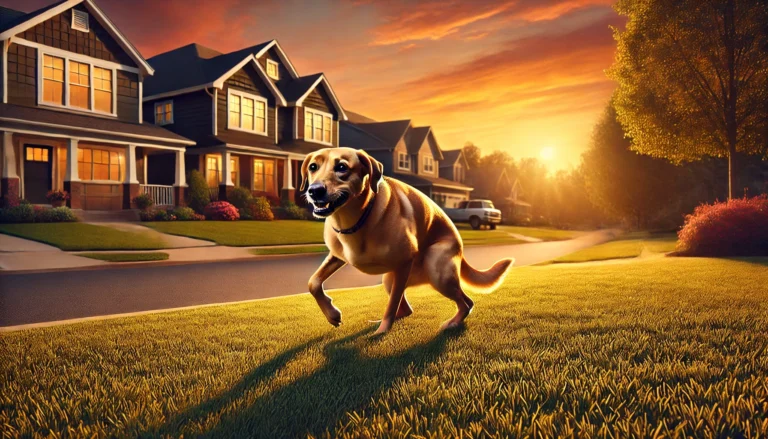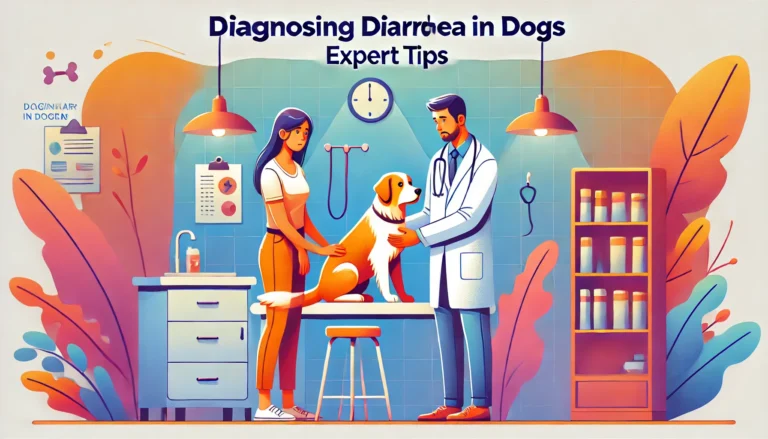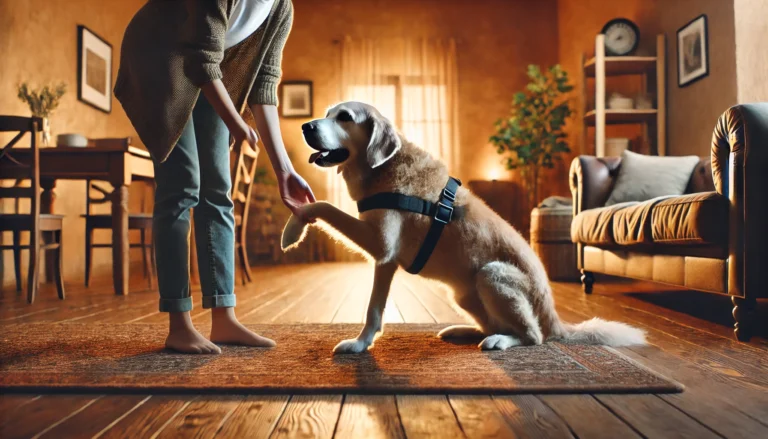what do dogs see at night? Crazy things about dog vision

The Science Behind Dog Vision
Ever wondered what the world looks like to your four-legged friend, especially when the sun goes down? Dog vision is quite unique and their ability to see at night is fascinating, shedding light on some of their seemingly mysterious behaviors. In this detailed exploration, we’ll dive into the specifics of what dogs see at night and uncover some incredible facts about canine vision.

Eye Anatomy and Night Vision
Dogs are equipped with several features that enhance their vision under low light conditions. Their pupils are larger than ours, allowing more light to enter the eyes, which is crucial for night vision. Dogs also possess a higher density of rod cells, which are more sensitive to low light than cone cells, the latter being more associated with color detection.
One of the most significant aspects of a dog’s eye is the tapetum lucidum. This reflective layer behind the retina helps to enhance light availability during night time, which is why dogs’ eyes often glow when light hits them in the dark. This adaptation significantly improves their ability to see in low light, giving them superior night vision compared to humans.
Field of View and Detection
Dogs have a wider field of view, around 240 degrees, compared to humans’ 180 degrees. This broad field of view allows them to detect movements on a wider scale, making them excellent at spotting potential prey or danger in their peripheral vision. This capability is enhanced at night, making their dog night vision an essential trait for both ancestral hunting and modern-day protection.
What Colors Can Dogs See?
While dogs do not see the full color spectrum that humans do, their world is not just black and white. Research indicates that dogs can see shades of blue and yellow. At night, however, colors become less distinguishable, and dogs likely see variations of gray. Understanding what dogs see helps explain why your pet may sometimes react to seemingly innocuous objects or shadows.
Dog Vision vs. Human Vision at Night
Dogs’ vision at night is significantly different from that of humans. While humans rely more on color and detail, dogs excel in detecting movement and light, which can make them more responsive to moving objects or the subtle rustling of leaves under moonlight. Their ability to see well in the dark is not just about clarity but also about sensitivity to motion, which is vital for their survival.
Crazy Facts About Canine Night Vision
- Glowing Eyes: The eerie glow of a dog’s eyes in the dark, caused by the tapetum lucidum, enhances their ability to see by reflecting light back through their eyes and increasing the light available to photoreceptors.
- Nighttime Behaviors: Ever notice your dog barking at ‘nothing’ or chasing unseen objects? This could be them noticing small animals or insects that reflect light or move within their enhanced field of view at night.
- Shadow and Light Play: Dogs often chase shadows or are startled by light beams at night because these scenarios create high contrast visuals that are easily detectable with their sensitive night vision.
Enhancing Your Dog’s Nighttime Experience
Knowing how well dogs can see in the dark and what colors they are most sensitive to can help you create a better environment for them at night. For instance, using blue or yellow lights can make their evening outdoor time more interesting and engaging. Moreover, understanding that your dog’s night-time barking may be due to their superior vision can help mitigate unwarranted stress and reactions from family members.
do you know?
If a dog appears to have developmental or behavioral issues, it may lead to the misconception that the animal has Down syndrome.
Conclusion about dog vision
Dog vision is a remarkable aspect of their physiology, providing them with the ability to navigate the world quite differently from humans, especially in low light conditions. At night, their vision capabilities come to the forefront, showcasing their evolutionary adaptations for nocturnal activities. Whether it’s their ability to detect motion better than we can, their unique color vision, or their infamous glowing eyes, the secrets of what dogs see at night reveal just how special our canine companions are. Understanding these aspects not only deepens the bond with our pets but also enhances our ability to care for them appropriately.
What do dogs see?
Dog vision allows them to see the world quite differently from humans. Their vision is adapted for low light and detecting movement, which is why they excel in dim conditions. Dogs perceive fewer colors due to having only two types of color receptors, optimizing their vision primarily for blues and yellows.
How many colors can dogs see?
Yes, the night vision capabilities of dogs are quite advanced. They have a special layer in their eyes called the tapetum lucidum, which reflects light into the retina, enhancing their ability to see in low-light conditions. This adaptation significantly improves dog vision, allowing better visibility than humans in the dark.
How many colors can dogs see?
Dog vision is limited to fewer colors than the human eye can perceive. They have dichromatic vision, meaning they have two types of color receptors. Dogs can see shades of blue and yellow, but they cannot perceive red and green, which appear as shades of gray to them.
Dog with human eyes
The phrase “dog with human eyes” often describes dogs that show particularly expressive gazes, making them appear as if they understand human emotions. Scientifically, it’s not about the structure of their eyes being like humans’, but rather the expressiveness and how dogs use eye contact to communicate, shaped by unique aspects of dog vision.
How do dogs see humans?
Through dog vision, dogs recognize and respond to humans primarily through body language and smell, but visually, they see humans as shapes and movements rather than detailed faces. Studies suggest that dogs can recognize their owner’s face, but they rely more on motion cues, scents, and sounds to identify and interact with their human companions.
How do dogs see the world?
Dogs view the world in a blurrier, less vibrant version than humans do. Their visual acuity is lower, about 20/75, which means what we can clearly see at 75 feet, they can only see clearly at 20 feet. However, dog vision is highly sensitive to motion and has a wider field of view, which makes them excellent at detecting movements.
How many eyelids do dogs have?
Dogs have three eyelids, with the third eyelid, also known as the nictitating membrane, serving as an additional layer of protection and also producing a significant portion of the eye’s tear film to keep it moist. This feature is crucial for maintaining the health and functionality of dog vision.
What does dog vision look like?
Dog vision is less clear and less colorful than human vision. Dogs see the world in shades of blue and yellow, and their ability to perceive detail is not as acute, making their vision appear blurrier. However, their excellent night vision and quick motion detection capabilities are superior to those of humans.
How well can dogs see in the dark?
Dogs can see quite well in the dark thanks to the tapetum lucidum, a reflective layer that enhances their ability to make the most of low light. This, combined with their large pupils and high number of rods in the retina, allows them to detect shapes and movements in conditions where humans would struggle, showcasing the strengths of dog vision.
Do dogs have good eyesight?
Dogs do not have good eyesight in the way humans understand it—they see the world less clearly and cannot see a wide range of colors. However, dog vision excels in other visual functions like detecting motion and seeing in dim light, which are more critical for their behavior and natural instincts.
What do dogs hear when we talk?
Dogs hear a higher range of frequencies than humans, which means they can detect sounds that we cannot. When we talk, they may not understand the words, but they recognize the tone, pitch, and volume, which they often use to gauge our emotions and intentions. Dogs can learn to recognize certain words or commands through consistent training.
Do dogs know you love them?
Yes, dogs can sense and respond to affection from their owners. They read emotional cues through our actions—such as petting, talking, and playing with them—which they associate with the positive reinforcement of being loved and cared for. Dogs often show their affection in return through tail wagging, licking, and staying close to their owners.
Do dogs know their name?
Dogs can recognize their names if they are trained to associate the sound of their name with specific outcomes, like treats or affection. When you consistently use their name, they learn to respond as a cue for attention or action, which shows their ability to recognize and differentiate specific sounds as being important.
Why do dogs lick you?
Dogs lick you for a variety of reasons: as a sign of affection, to show submission, or because they like the salty taste of your skin. Licking is a natural behavior that dogs learn from the time they are puppies when their mothers lick them to groom and stimulate them.
Why does my dog put his paw on me?
When a dog puts his paw on you, it can be a sign of affection, a request for attention, or a way of communicating a need, such as wanting to play or go outside. This behavior is part of how dogs interact with their human family members, seeking emotional connection and communication.






